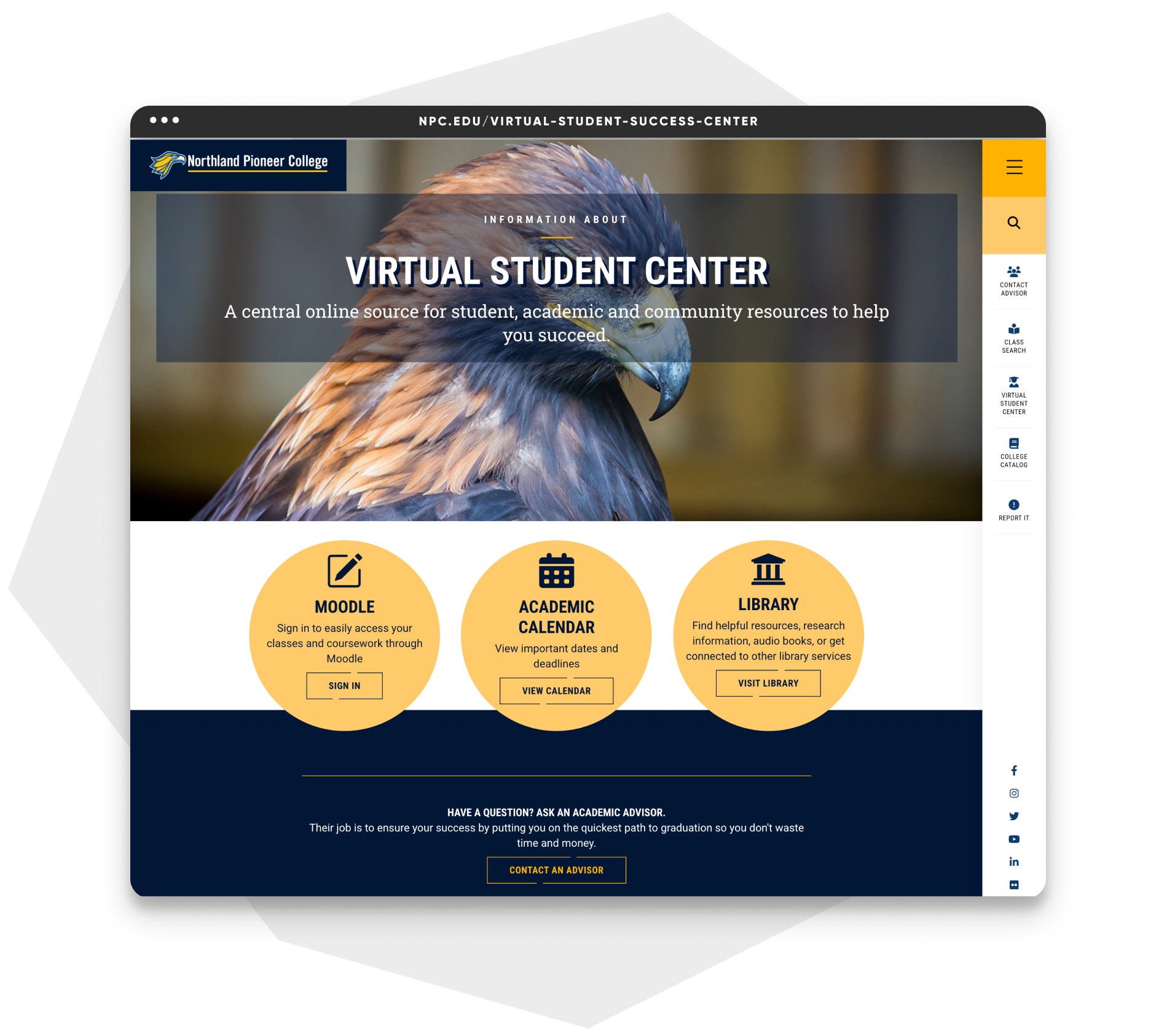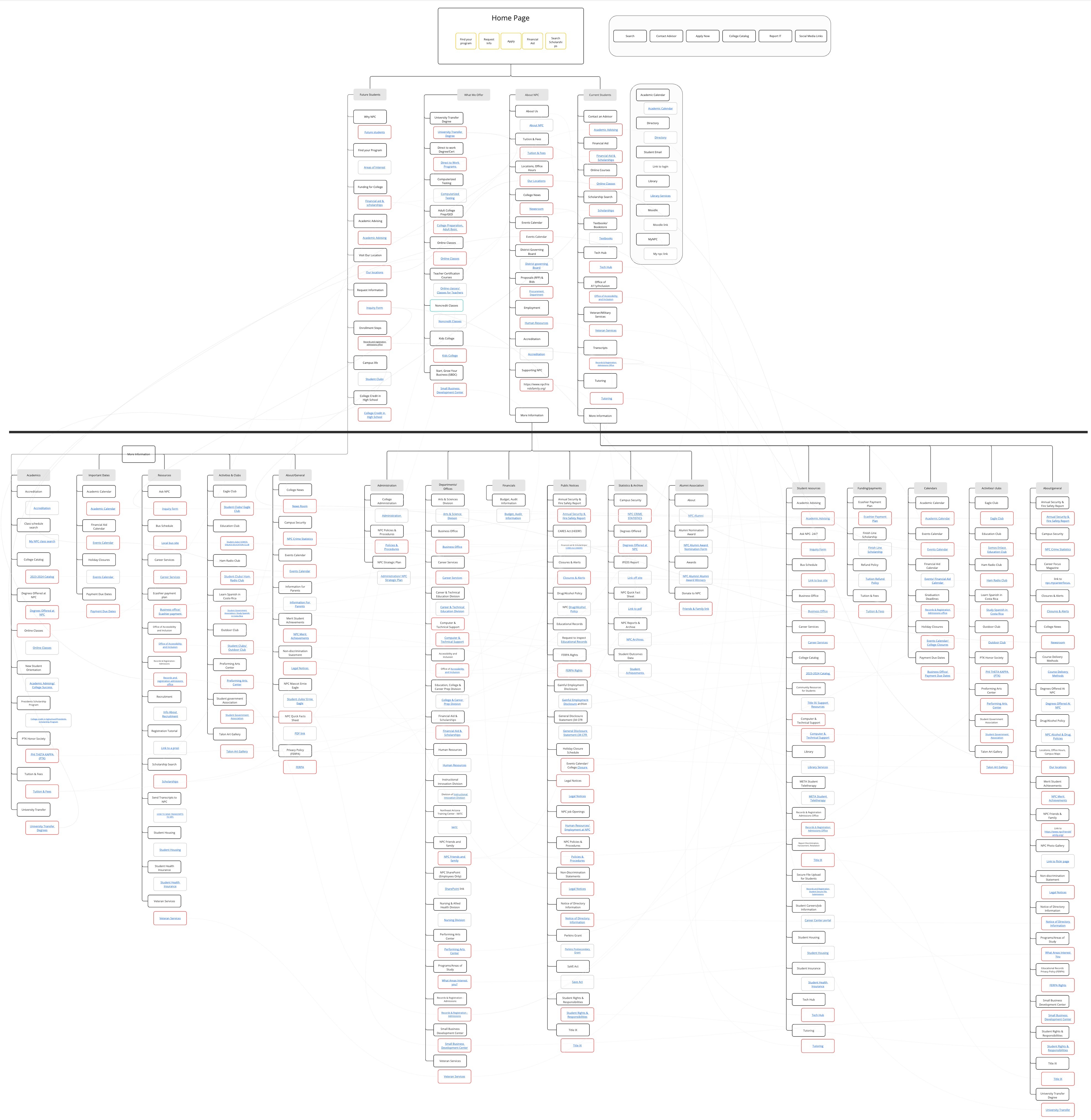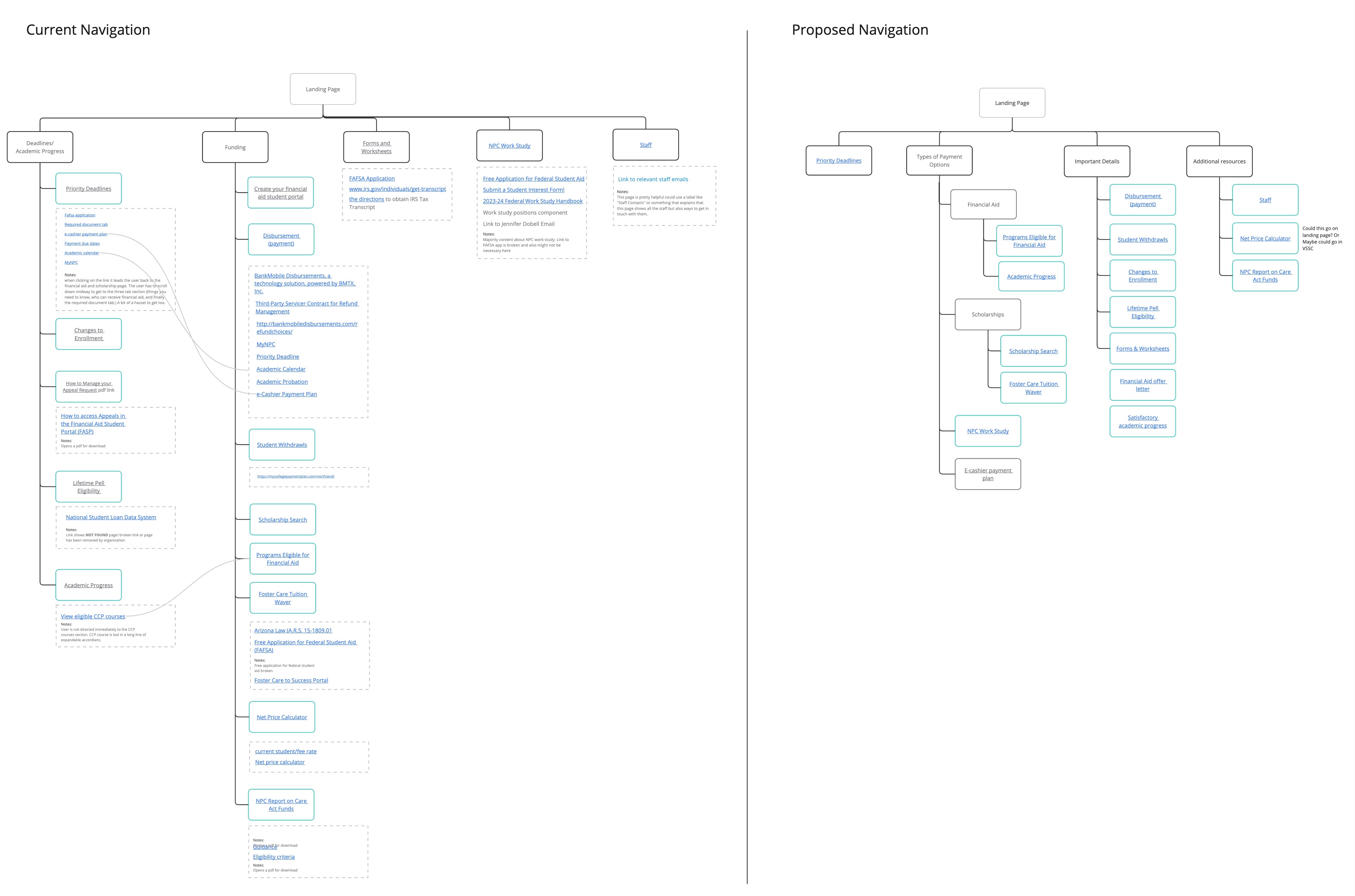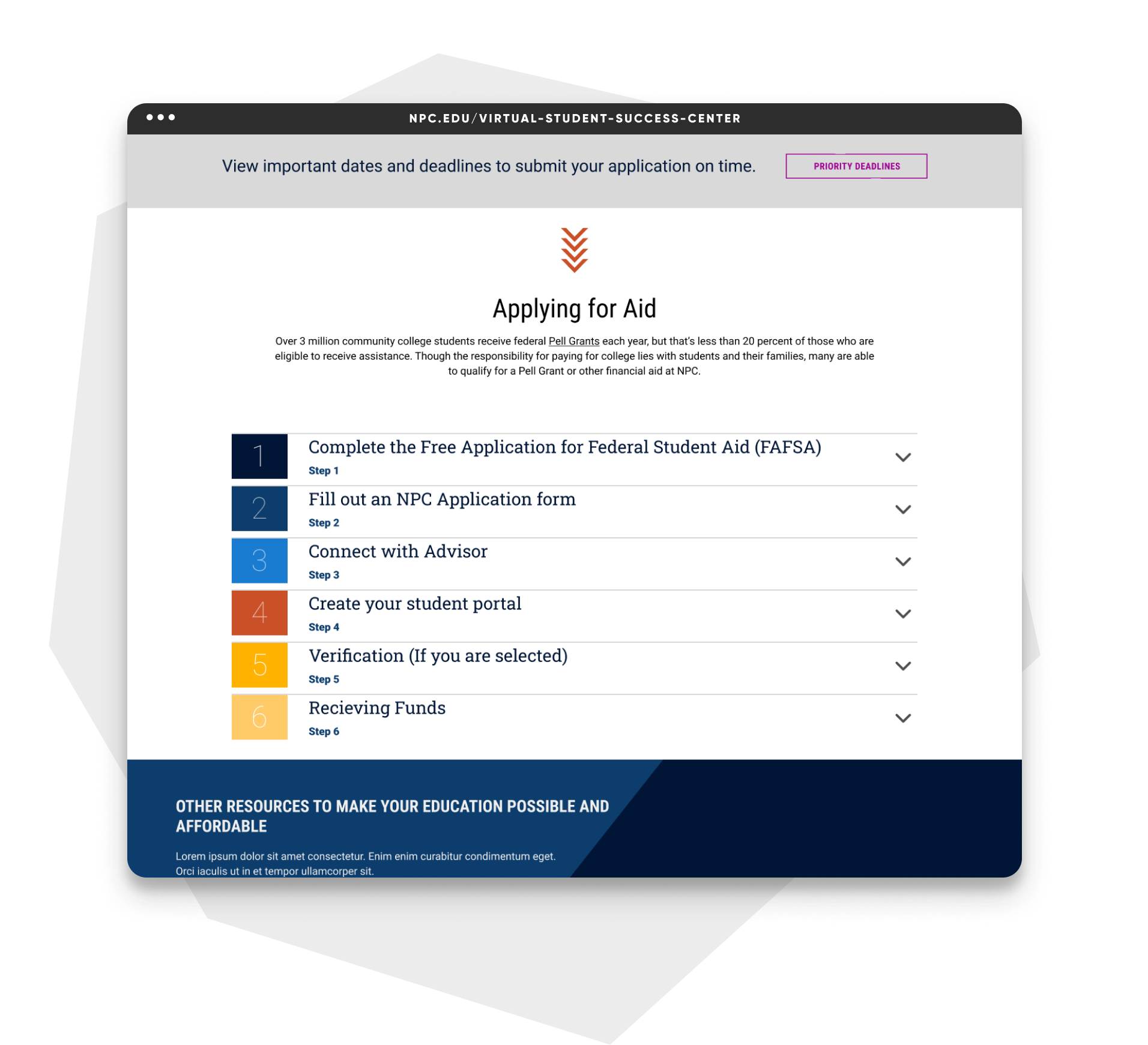Clear pathways to academic success: NPC’s student-centered virtual hub

Overview
Northland Pioneer College (NPC) partnered with Last Call Media (LCM) to enhance their site’s layout and the overall online experience for current and prospective students. We provided end-to-end support, from user research and content modeling to insight-driven design and development. The result is an all-inclusive, easy-to-use virtual hub that centralizes student resources. The project directly aligns with NPC’s five-year strategic goals to increase enrollment, improve student outcomes, and improve college sustainability.

About the client
Northland Pioneer College is a community college serving rural areas in northeastern Arizona. The college is committed to providing accessible education opportunities to a diverse student population — from adult learners balancing work and school, to recent high school graduates attending college for the first time. NPC’s mission centers on student success through quality education, which calls for digital tools that reflect the same high standard as their in-person student support.
Goals
The primary goal was to develop an easy-to-use, one-stop digital resource for current and prospective students. NPC needed to:
- Create a centralized hub where students can quickly access critical information and services.
- Streamline the online user experience to reduce frustration and confusion.
- Improve navigation and findability of key student resources.
- Address specific pain points in high-priority areas like financial aid.
- Support NPC’s strategic goals of increased enrollment and improved student outcomes.
- Empower staff with better digital tools to support students effectively.
The project emerged from recurring feedback that students struggled to locate essential information across the website. This was hindering student success and creating unnecessary barriers to enrollment, retention, and graduation.
Challenges
Through extensive research, Last Call Media identified several key challenges facing NPC students:
- Difficulty finding essential information: Students struggled with the disorganized navigation structure and reported significant difficulty finding critical information like course schedules and registration requirements. With key touchpoints scattered and buried across the site, many students resorted to contacting advisors for information that should have been easily accessible online, leading to frustration on both sides.
- Complicated financial aid process: A majority of student survey participants reported difficulties with the financial aid process, often relying on external resources or direct advisor contact to navigate and complete necessary steps.
- Registration obstacles: New students particularly struggled with registration, citing confusion about requirements, uncertainty about correct form completion, and lack of clear guidance throughout the process.
- Content overload: Students described many pages as cluttered and overwhelming, especially on mobile devices where content appeared even denser.
- Transportation barriers: Many students identified transportation as a significant factor affecting their ability to attend classes, highlighting the need for better communication about available resources.

Solutions
Last Call Media employed a multi-faceted approach to address NPC’s challenges:
1. Comprehensive user research
LCM conducted a four-part research process to gain a robust understanding of user needs:
- Stakeholder interviews with NPC faculty and staff
- In-depth student interviews to gather qualitative insights
- Student surveys that generated quantitative data and revealed clear patterns
- Cross-institutional analysis of virtual student center implementations
This research approach uncovered critical pain points and opportunities for improvement. The survey was particularly valuable in identifying widespread issues with financial aid, registration, and navigation.
2. Content modeling and inventory
After identifying that students struggled most with finding information buried in the “Current Students” section of the navigation, LCM:
- Performed a comprehensive content inventory of this section
- Flagged content to be leveraged in the new virtual student center
- Collaborated with NPC to organize and map content for the new center
- Created a robust content model for both the student center landing page and financial aid page

3. User-centered design
We collaborated closely with the client, using research findings to guide every step of the design process:
- Developed wireframes for the virtual student center that prioritized user needs
- Incorporated design best practices identified through peer analysis
- Created a step-by-step guide for the financial aid process
- Made information more accessible by designing clear pathways to advisors
- Built both new components and leveraged existing styles for a cohesive experience
4. Implementation
The development phase brought the design to life:
- Built webpages for the virtual student center and financial aid landing page
- Connected event/appointment links with other software applications
- Created chat options for student assistance
- Embedded virtual meeting links for easy access to advising
- Conducted quality assurance testing with multiple stakeholder groups

Results
The Virtual Student Success Center has become a centralized hub for NPC students’ academic journey, addressing the key challenges identified in research.
Key features and improvements:
- User-centered resource hub: A single destination for all critical student resources, organized by student needs rather than administrative structure.
- Streamlined financial aid process: Step-by-step guide with relevant links, tutorials, and direct access to advisors.
- Improved navigation: Clearer pathways to essential information and services.
- Mobile-friendly design: Decluttered pages that work well on all devices.
- Enhanced student support: Multiple contact options and clear pathways to human assistance.
Impact metrics:
The dynamic, engaging, and easy-to-navigate virtual student portal has delivered significant measurable results:
- 162,000 total users in the first 12 months after launch.
- 157,000 new users have joined the portal within that period.
- Support focused where it’s needed most, as an efficient student hub frees up faculty and staff to provide face-to-face support to students from high risk communities.
- Data-driven improvement through ongoing site analytics that track portal usage in correlation with student enrollment and retention.
- Aligned with strategic goals by supporting NPC’s objectives for enrollment, student outcomes, and sustainability.
Learnings
This project reinforced several key principles for creating effective digital student resources:
- Research-driven design is essential: Our comprehensive research uncovered critical pain points that might have been missed with a more limited scope.
- Users value human connections: While digital resources are important, students consistently praised NPC’s advisors and staff. The digital experience should enhance, not replace, these vital human connections.
- Simplicity beats comprehensiveness: Students were overwhelmed by too much information. Focusing on core tasks and clear pathways proved more valuable than attempting to include everything.
- Mobile experience matters: Many students access resources primarily through phones, making mobile-friendly design critical to success.
- Financial processes need special attention: The complexity of financial aid emerged as a major pain point, warranting dedicated focus beyond the main student center design.
For organizations undertaking similar projects, we recommend:
- Prioritizing user research with diverse student populations
- Creating clear step-by-step guidance for complex processes
- Organizing information around user goals rather than institutional structure
- Providing multiple pathways to human support when students need assistance
- Testing with actual students throughout the design process